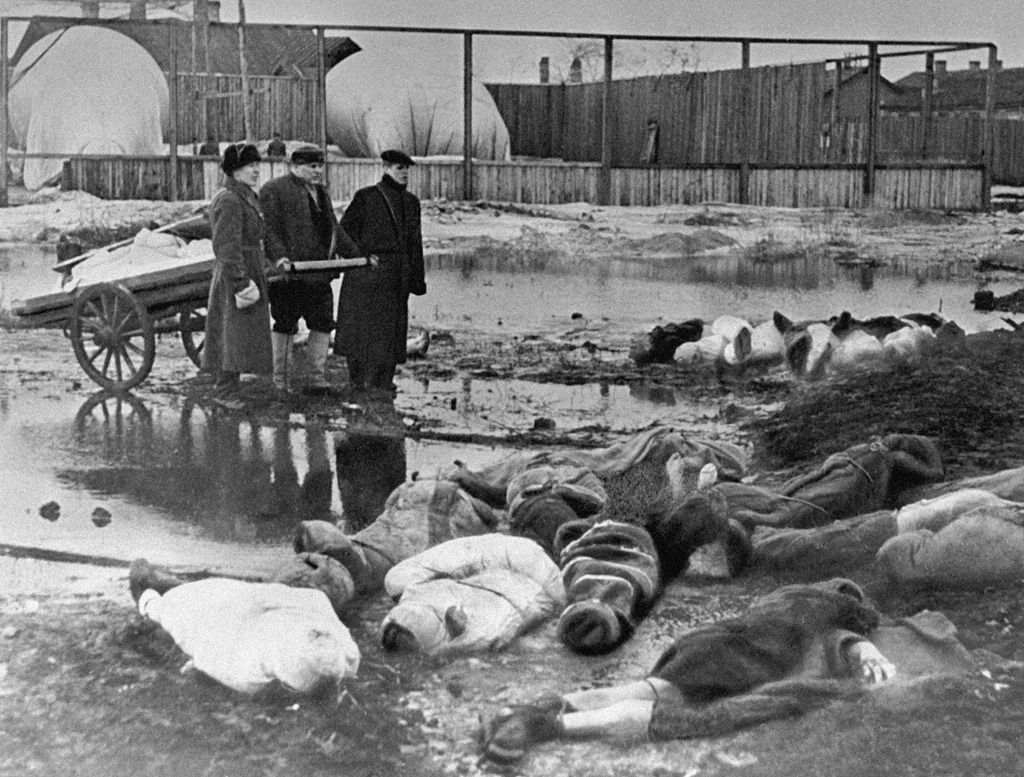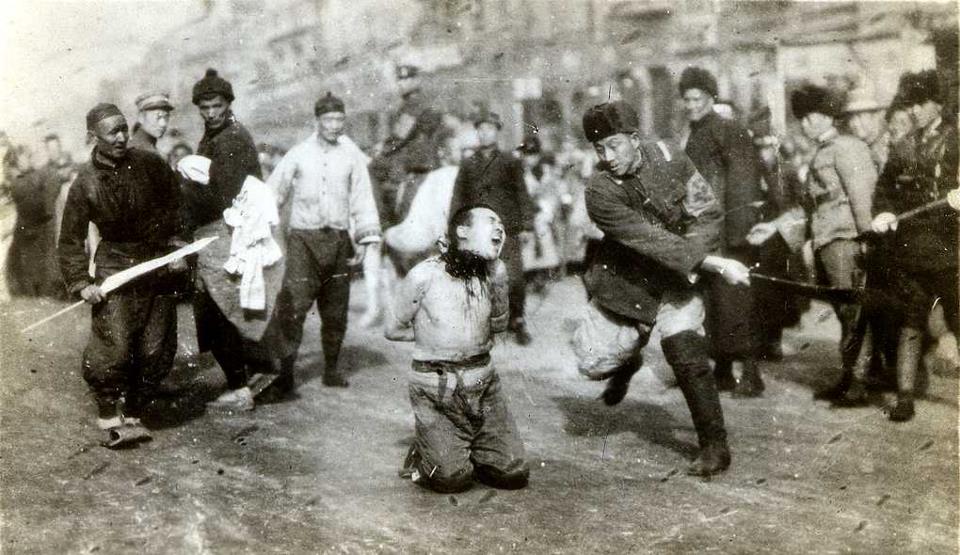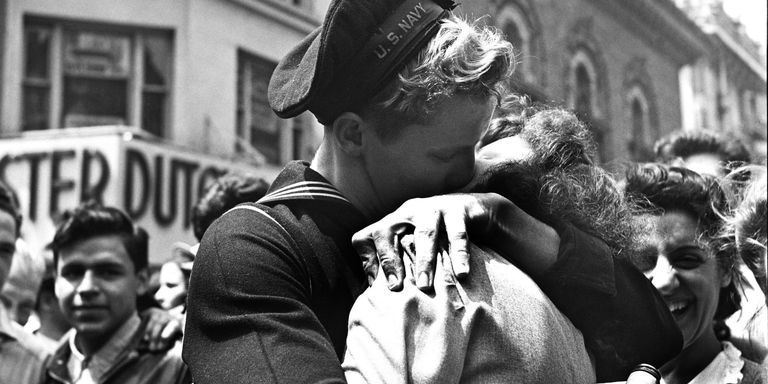World War II (also called ‘The Second World War’) was a global conflict. It ran from 1939 to 1945, involved over 30 countries and 100m people, and resulted in 50-85 million deaths. It remains the deadliest conflict in world history.
The Shadow of World War I
World War I (1914-1919) had killed over 15 million people. The manner in which it ended, however, would lead to the beginning of World War II.
– The Treaty of Versailles, made after World War I, allowed the winners to dominate and brought Germany to its knees (it was paying reparations for its defeat and suffering hyperinflation). As German money became useless it had to start giving up materials. A strong nationalistic movement began in Germany. From this rose the National Socialist German Workers’ Party (commonly called the Nazi Party) and Adolf Hitler.
– In Asia Japan, an ally of the winners in World War I, stepped up efforts to build its empire. By 1937 it was already in control of much of East Asia and in a war with China. It’s military ‘war machine’ was the strongest in the region.
The Nazi Party’s Rise and Ambition

In 1928 the Nazi Party only won 1.1% of the vote in a national election. However Germany’s instability was leading to violence, and the Nazi Party used this instability (and their own violence) to build support. At the same time The Communist Party in Germany was also fighting against the failing democratic parties.
Although they disliked each other these two parties began to change German politics. Democracy failed, and there were many murders and assassinations at the time. In a 1930 democratic election the two undemocratic parties won 50% of the vote. The democratic parties in Germany had to start working with the undemocratic.
In 1933 a coalition made Hitler chancellor of Germany, one of the most powerful positions in the country. An act later gave him ‘temporary power’ of Germany (an agreement made whilst Nazis surrounded the building threatening war within Germany if the act wasn’t signed). Hitler then banned all non-Nazi parties. By 1934 he was dictator.
Some people began to fear what Hitler’s Germany wanted to do. In 1938 Britain’s Prime Minister Neville Chamberlain met Hitler in Munich to discuss peace. It is believed that Hitler said ‘Ja, ja’ (yes, yes) to all Chamberlain’s requests, then signed an agreement. When Chamberlain returned to his team he patted his pocket where the paper was and said ‘I’ve got it’. Hitler, meanwhile, told his Foreign Minister: ‘Oh, don’t take it so seriously. That piece of paper is of no further significance whatever.’ Chamberlain is often seen as naive in believing peace was assured. Hitler would later say to his generals ‘Our enemies are small worms. I saw them in Munich.’
The Invasions of Poland and Finland, and World War Begins

On September 1st 1939 Germany invaded Poland. Refusing to leave, the UK and its allies declared war on Germany 2 days later. September 1st is widely seen as the day World War 2 began.
This was not the only time Poland was invaded, however: on September 17th the USSR also invaded from the east. Germany and the USSR decided to divide up the country.
In November the USSR also invaded Finland. At this point ‘The Allies’ believed the USSR would fight with the Germans, rather than against them.
Blitzkrieg, More Invasions and The Maginot Line

The German army used a military tactic known as blitzkrieg: using lightning strikes to take countries at high speed. It continued west, taking Denmark and Norway in April 1940 (Denmark fell within a few hours; Norway took a couple of months). The UK’s inability to help Norway led to their Prime Minister Neville Chamberlain being replaced by Winston Churchill.
France had built a series of strong defenses called ‘The Maginot Line’ against the German border to repel attacks; however, the Germans instead took the flat lands of Belgium and Luxembourg, bypassing the Maginot Line completely on their way into France. Many now perceive the Maginot Line as folly, although in truth there were Belgian and French forces beyond it. Nonetheless, against the quick German tanks and airstrikes these were quickly defeated. On June 14th 1940 Paris fell, and the country surrendered 8 days later.
The UK began taking control of countries in an effort to stop Germany invading them. Iceland, Greenland and the Faroe Isles all came under British control. The British also sank the French navy, fearing the Germans would use it.
As the Germans were moving on the Western Front, so was the USSR in the east. The Soviets took Estonia, Latvia, Lithuania and Bessarabia (in Romania). German and Soviet cooperation, however, was failing.
The Axis and Allies
In September 1940 Germany, Italy and Japan signed an agreement that created ‘The Axis Powers’. This agreement stated that any country (except the USSR) that attacked an Axis country would have to fight all three nations. The Axis was later joined by three more countries: Hungary, Romania, and Slovakia.
Germany approached the USSR to see if they would join the group. At first the USSR showed interest, but talks eventually failed. Suspecting the USSR might join The Allies Hitler, in December 1940, ordered his forces to prepare an invasion of the USSR.
With the US already supporting the UK (but not yet fighting) the war now had clear sides: The Axis Powers and The Allies.
Europe: A War on Two Fronts

By the end of 1940 Germany had taken most of Europe, stopping on the west at the Spanish border and the English Channel. Plans were drawn up to invade the UK, and in the meantime the German air force (The Luftwaffe) bombed much of England. Many cities were destroyed, and children were sent to the countryside to reduce casualties. The Royal Air Force (RAF) fought the Luftwaffe in the skies, a battle known as The Battle of Britain.
Hitler offered the UK an end to the war in July 1941. The UK refused.
On the Eastern Front The Axis Powers began Operation Barbarossa, the effort to remove the USSR’s military and open up more space. From June to October 1941 much of western Russia was ceded to the Axis, but the Soviets did not lose their two main cities (the siege of Leningrad, which lasted until 1944, is the longest in history).
The holdouts by the USSR and the UK were important: it stopped Germany’s momentum and ended the German army’s successful blitzkrieg strategy.
Africa and The Pacific

Europe was the main theatre for much of the war, but it was not the only part; indeed, like Germany, the USSR was fighting a war on two fronts because Japan was invading much of the Pacific. It had taken land from Korea and the USSR, many of the small islands, and was well into China (the Chinese themselves also fighting something of a civil war at the same time). Like Germany, Japan’s wartime conduct was brutal: estimates at how many died under Japanese occupation range from 3m to 14m, and included massacres and human experimentation.
The US, UK, Germany and The Netherlands all had interests in South-East Asia and Indochina. In an effort to remove Japanese influence Allied countries began a full trade embargo, cutting Japan’s supplies. This put pressure on Japan to either negotiate or expand its war. The Japanese government offered to remove troops from threatening positions if the embargo was lifted and the US stopped giving aid to China. The US countered by saying Japan had to completely remove itself from China if it wanted to trade. As the Japanese military was never going to agree to this the countries were ready for war.
On December 8th (December 7th in western time zones) Japan began a full offensive against UK and US areas in the Pacific, including the bombing of the US fleet at Pearl Harbor, Hawaii. The US, UK, China and Australia all declared war on Japan. The Germans, who were in the Axis, agreed to help Japan. The USSR, already stretched, tried to stay out of this conflict.
Africa too saw conflict, particularly in the north where Italy invaded in 1940. This victory, however, did not last long: The Allies pushed the Italians back into Europe, and Hitler was forced to bring troops to the Mediterranean to stop The Allies taking control in Greece.
1942: A Change of Momentum

1942 is the year the war turned.
The Axis’s advance through Europe stopped on both fronts. Meanwhile Japan lost the important Battle of Midway (near Hawaii) to the US, reducing their control of the Pacific.

Germany then suffered two big defeats. First, they lost in North Africa. After that came the devastating loss in Stalingrad, one of the deadliest and most miserable battles of the war. Initially the Germans had taken control of the city, but the city was then surrounded by the Soviet army. Stuck in the Russian winter they were killed, starved and frozen.
Many war historians put the Battle of Stalingrad as the pivotal moment of the war. Germany took huge loses and began to lose the Eastern Front.
The Axis Goes Backwards

In 1943 Italy surrendered. Germany, however, took Rome and rescued the Italian leader Mussolini. Meanwhile the US took control of the Pacific, commanding most of it by early 1944. Germany tried one more push into the Soviet Union in July 1943, but it failed and for the first time in the war Hitler abandoned an attack before it was complete. Hopes of keeping what they had were quickly killed: a week later the USSR began a counter-attack.
On June 6th 1944 (known as D-Day) the Allies landed on the beaches of Northern France. By August Paris had been retaken and France was on the way to being restored. On the Eastern Front the USSR not only took back all territory it had lost, but began to make moves into German territory. The USSR put new leaders into Romania and Bulgaria, which duly swapped to the Allies. In the Pacific Japan lost control of Burma and China, and the Prime Minister resigned. The UK also saw a new leader at the time, with Clement Atlee replacing Winston Churchill.
1945: The End

The Allies had retaken western and eastern Europe by the beginning of 1945. The next step was to move into Germany. In February, March and April the Germans and Italians were pushed back.
April was a month of many changes. On April 12th the American President Franklin Roosevelt died – he was replaced by Harry Truman. On the 28th Italy’s leader Benito Mussolini was killed by his own countrymen. The next day Germany ceded Italy – which it had been controlling since Italy surrendered in 1943 – and the day after that (April 30th) Adolf Hitler committed suicide.

On May 8th Germany surrendered. Japan was the only major Axis country left fighting. On August 6th and August 9th the US became the first country to use nuclear weapons in warfare, dropping atomic bombs on the Japanese cities of Hiroshima and Nagasaki. The Japanese surrendered on August 15th. This meant ‘total victory’ for the Allies.
Aftermath
After the war the United Nations was built; the victors (US, UK, USSR, France, China) made themselves permanent members with the power of veto. This has made them the most powerful UN members.
The US, USSR, and Europe went in different directions after the war. The US and USSR began an effort to become superpowers, leading to The Cold War. Europe, meanwhile, had seen it’s imperialism start two global wars. Many of the colonies went independent and the empires died away, leading to less powerful countries but more stability in the area.
Germany and Japan changed their national policies, focusing more on manufacturing than territory. This would make them leading economies by the 1980s.
The US’s use of nuclear weapons changed the potential of warfare.
